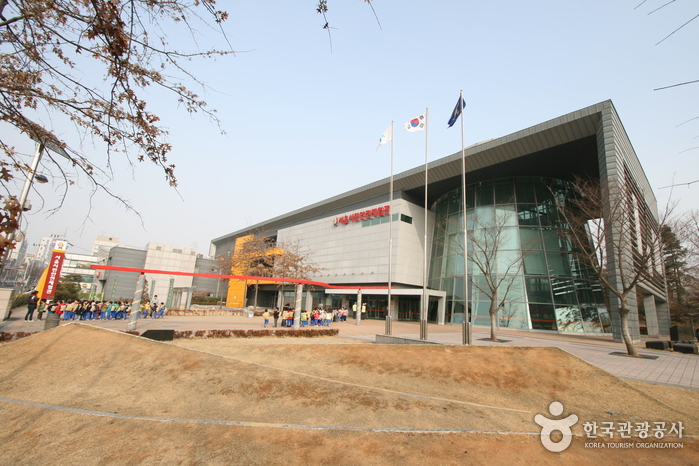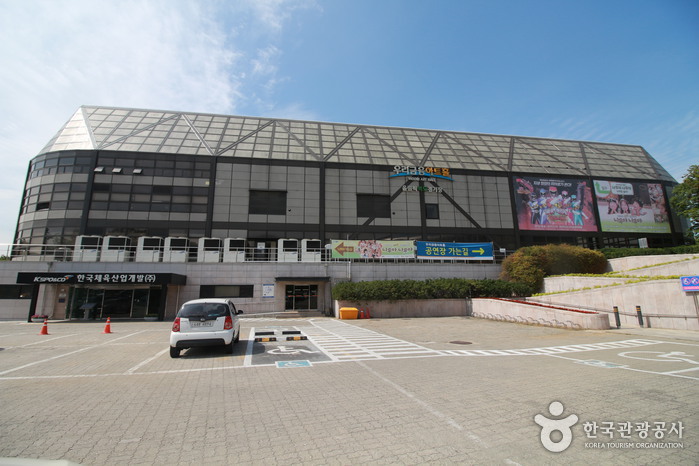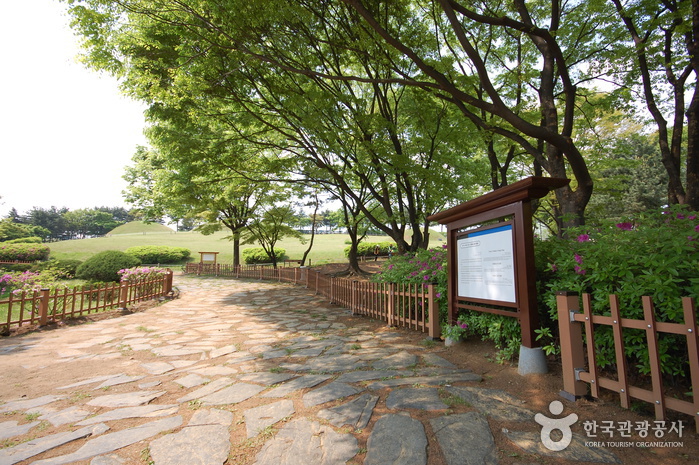Olive Young - Nambu Bus Terminal Branch [Tax Refund Shop] (올리브영 남부터미널)
4.9Km 2024-04-18
283, Hyoryeong-ro, Seocho-gu, Seoul
-
Gwangnaru Safety Experience Center (광나루안전체험관)
4.9Km 2025-03-29
238, Neungdong-ro, Gwangjin-gu, Seoul
+82-2-2049-4061
Gwangnaru Safety Experience Center was founded in 1999 after two fire accidents in which many children lost their lives. These tragedies emphasized the necessity of establishing a disaster training center for common citizens.
Gwangnaru Safety Experience Center is a three-story building with one basement floor, covering an area of more than 5,000 m². The basement floor includes a small theater. The first floor is set up for natural disaster training and consists of an orientation hall, storm simulation training room, earthquake simulation room, computer tests on fire safety knowledge and others. The second floor is a place for artificial catastrophe training. It consists of a smoke escape training room, fire extinguisher training room, first-aid (CPR) training room and practice place for calling 119. The third floor is used for rescue training and consists of a rescue training room, screening room, training for professionals and video examples of the five biggest disasters that have occurred in Seoul. Overall there are about 20 training areas established, so citizens can experience the imitation of a disaster by themselves and learn easily and in an interesting way how to cope with a disaster.
Shinsegae Factory Store - Gangnam Branch [Tax Refund Shop] (신세계팩토리 강남)
4.9Km 2024-04-16
194, Sinbanpo-ro, Seocho-gu, Seoul
-
Innisfree - Seoul Express Bus Terminal Branch [Tax Refund Shop] (이니스프리 강남고속터미널)
4.9Km 2024-04-18
B1 Store #3, #4, 194, Sinbanpo-ro, Seocho-gu, Seoul
-
KSPO Dome (Olympic Gymnastics Arena) (올림픽공원체조경기장)
5.0Km 2025-06-30
424 Olympic-ro, Songpa-gu, Seoul
The KSPO Dome was the arena built for gymnastic events during the 1988 Seoul Summer Olympics, but has been remodeled to host concerts, including for many K-pop stars and international pop stars. The dome can also serve as venue to a range of other events, including showcases, exhibitions, and business events. It is accessible via public transit using Olympic Park Station on Seoul Subway Lines 5 and 9.
Woori Art Hall (우리금융아트홀)
5.0Km 2025-04-01
424 Olympic-ro, Songpa-gu, Seoul
Woori Art Hall is a cultural art space located within Olympic Park, opened in November 2009 after a two-year renovation project from the previous Yeokdo Stadium. The 1,184-seat hall is primarily for musicals, but can also host a range of performances including plays, dance, classical, and modern music.
MS Eye Clinic (엠에스안과의원)
5.0Km 2025-10-23
2F, 189 Sinbanpo-ro, Seocho-gu, Seoul
MS Eye Clinic has attracted international patients by establishing MOUs with several countries. The clinic has nine branches across Korea, with potential for further development.
The clinic offers improved K-medical services through non-discriminatory treatments and prices for both domestic and overseas patients. It takes pride in its medical expertise and technological power with its university and general hospital partners, which have MOUs with the clinic and refer patients who require surgery to the clinic.
To provide better medical services, the clinic has examination and surgical equipment and surgical staff members of university hospital-level or higher. One of the merits of the clinic is that it provides general outpatient care in addition to treatments for presbyopia/cataract surgery, Silk SMILE LASIK, Dream Lenses, dry eye syndrome, retinal diseases, and oculoplastic surgery.
Olive Young - ENTER 6 Gangnam Branch [Tax Refund Shop] (올리브영 강남엔터식스)
5.0Km 2024-04-18
B188 Sinbanpo-ro, Seocho-gu, Seoul
-
Seoul Bangidong Ancient Tombs (서울 방이동 고분군)
5.1Km 2022-12-29
219, Ogeum-ro, Songpa-gu, Seoul
+82-2-2147-2800
The ancient tombs in Bangi-dong were discovered during the land readjustment project of Jamsil-jigu District in 1975. A total of eight ancient tombs were excavated until 1976, and the site was restored into a park in 1983. The Bangi-dong area was originally a low line of hills with an altitude of 30-50 meters above sea level, but it has been made into flatland for urban development purposes. Tomb numbers 1 to 6 lie on the same hill, while tomb no. 7 and 8 are located on another hill a short distance away.
All eight tombs have circular burial mounds. The insides of the a tomb feature a square or rectangular-shaped burial chamber with earthen ground and stone walls, and a passage leading from the tomb entrance to the chamber. However, details of the burial chambers vary by tomb. Most of the tombs had been robbed before the investigation, but a few relics such as plates and pots have been excavated. At the time of excavation, the relics were presumed to have come from the Baekje dynasty (18 BC-660 AD), but it is now estimated that they date back to the Unified Silla Period (676-935 AD).
![Olive Young - Nambu Bus Terminal Branch [Tax Refund Shop] (올리브영 남부터미널)](http://tong.visitkorea.or.kr/cms/resource/42/2888942_image2_1.jpg)

![Shinsegae Factory Store - Gangnam Branch [Tax Refund Shop] (신세계팩토리 강남)](http://tong.visitkorea.or.kr/cms/resource/08/2888208_image2_1.jpg)


![Olive Young - ENTER 6 Gangnam Branch [Tax Refund Shop] (올리브영 강남엔터식스)](http://tong.visitkorea.or.kr/cms/resource/46/2888846_image2_1.jpg)
![Olens [Tax Refund Shop] (오렌즈)](http://tong.visitkorea.or.kr/cms/resource/42/2891142_image2_1.jpg)

 English
English
 한국어
한국어 日本語
日本語 中文(简体)
中文(简体) Deutsch
Deutsch Français
Français Español
Español Русский
Русский